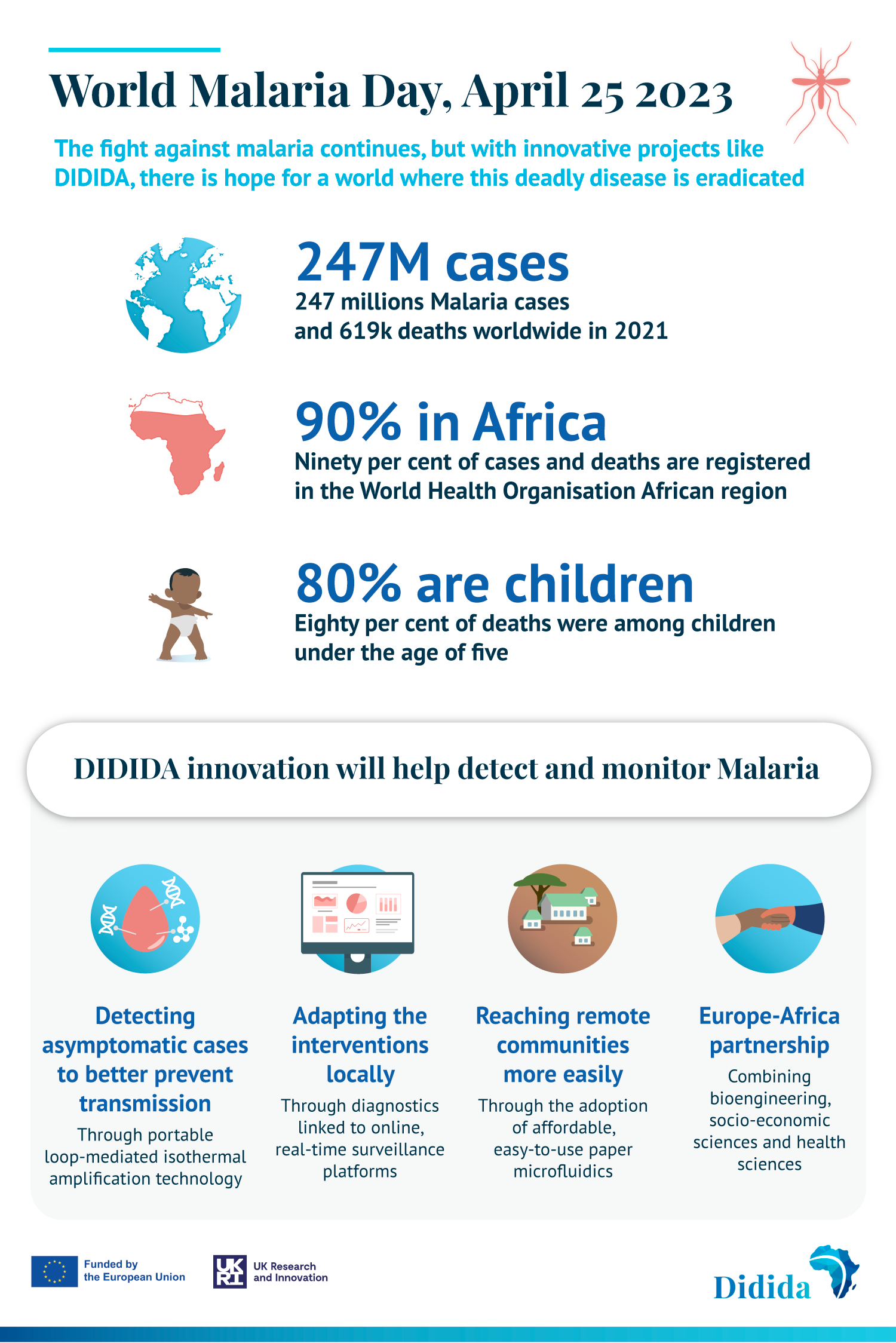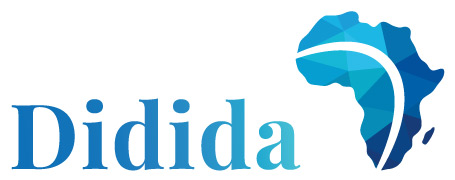DIDIDA joins the global community in observing World Malaria Day on 25 April
As World Malaria Day approaches on April 25th, the global community joins together in raising awareness of the ongoing battle against this mosquito-borne disease.
While huge progress has been made in reducing the annual death rate from malaria by nearly half over the past twenty years, there has been a recent resurgence in cases and fatalities.
One crucial tool in the fight against malaria is diagnostics. By detecting cases early and accurately, treatment can be provided efficiently, and further spread curbed. Although low-cost and efficient technologies for diagnosing malaria exist, it can be challenging to bring them to rural populations, where the burden of the disease is often the greatest. However, innovative solutions such as those being developed by the DIDIDA project are helping to make diagnostic tools more accessible to remote communities and advance the fight against this deadly disease.

The Disproportionate Burden of Malaria in Africa
The World Malaria Report indicates that there were 247 million cases of malaria and 619,000 malaria deaths in 2021. The burden, however, isn’t proportionate, as the WHO African region continues to host more than 90% of malaria cases and deaths in 2021. Alarmingly, approximately 80% of malaria deaths in the region were among children under the age of five, killing one child every minute.
Malaria is an acute febrile disease caused by five species of parasites carried by mosquitoes, with the deadliest one being Plasmodium falciparum, which is also the most prevalent in Africa. The symptoms may start with mild fever, headache, and chills, but if left untreated, malaria can progress to severe illness and death.
Rapid Diagnostics Play a Vital Role in Malaria Reduction
Rapid diagnostic tests (RDTs) that use lateral flow strips are a vital tool for tackling malaria, particularly in areas where access to microscopy is limited. RDTs are simple to use, require minimal training, and provide results within 10-30 minutes. However, they often have low sensitivity, which makes it difficult to identify asymptomatic or pre-symptomatic individuals and thus limits their impact on reducing spread and burden.
DIDIDA Innovation Helps Detect and Monitor Epidemics such as Malaria
The DIDIDA project, a collaboration between African and European partners, aims to leverage innovation to make diagnostic tools more accessible to remote communities and thus help eradicate malaria. DIDIDA is developing a new low-cost lateral flow test capable of diagnosing multiple diseases, including malaria. The test will be readable via a smartphone application and all data will be aggregated on a platform with geo-tagged and time-tagged information. This makes it possible to monitor the evolution of infectious diseases, such as malaria, throughout the year, providing health authorities with a comprehensive view of disease prevalence and enabling them to take more effective action.
The DIDIDA test is based on the development of DNA and molecular sensor technology using affordable paper microfluidics. This means that the test can be used in under-served healthcare settings and does not require specialist training, making it accessible to a wider population. One of the key advantages of the DIDIDA test will be its high sensitivity, due to its implementation of DNA amplification methods, allowing the test to identify asymptomatic or pre-symptomatic individuals to help prevent the spread of the disease.
The fight against malaria continues, but with innovative projects like DIDIDA, there is hope for a world where this deadly disease is eradicated.
Want to know more?
Are you a student and you want to learn more? A researcher seeking to consult our publications? A citizen eager to better understand the issues? A decision-maker who can promote this innovation? A journalist looking for an engaging story to tell?
